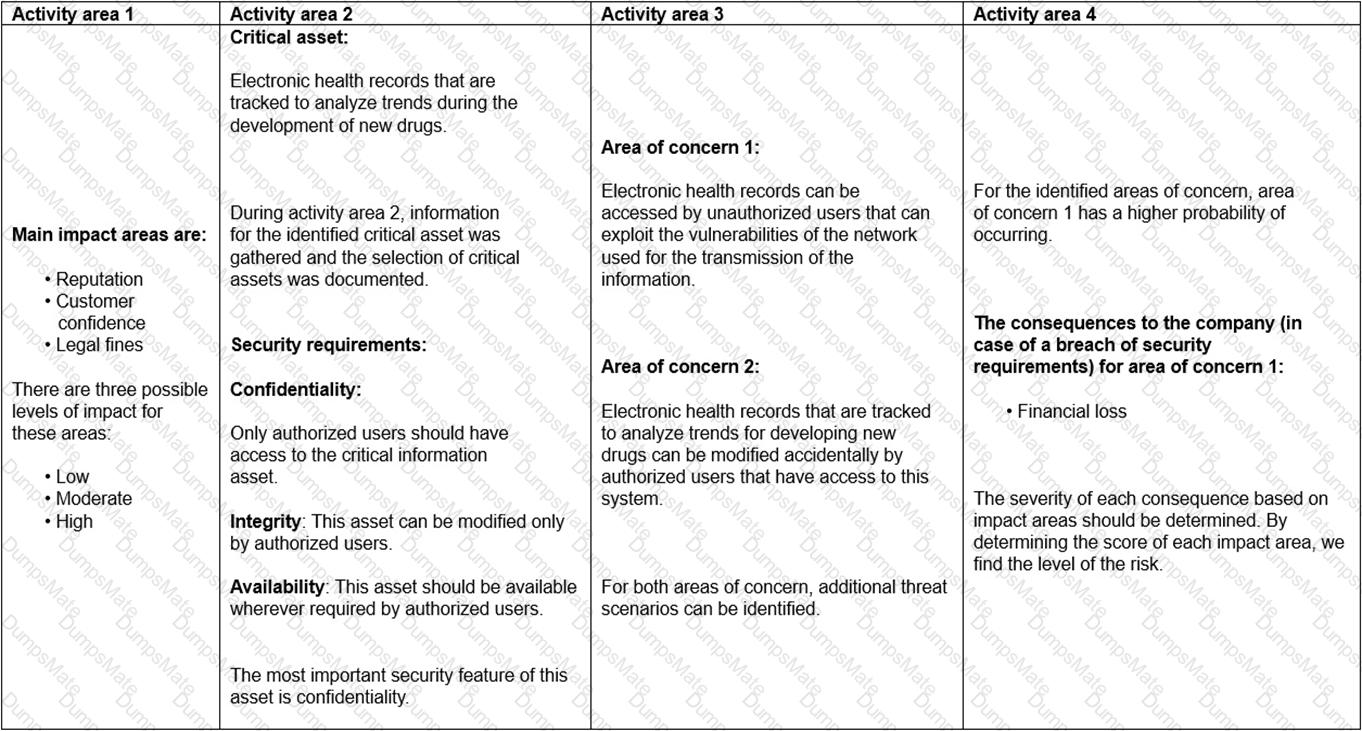Scenario 6: Productscape is a market research company headquartered in Brussels, Belgium. It helps organizations understand the needs and expectations of their customers and identify new business opportunities. Productscape’s teams have extensive experience in marketing and business strategy and work with some of the best-known organizations in Europe. The industry in which Productscape operates requires effective risk management. Considering that Productscape has access to clients’ confidential information, it is responsible for ensuring its security. As such, the company conducts regular risk assessments. The top management appointed Alex as the risk manager, who is responsible for monitoring the risk management process and treating information security risks.
The last risk assessment conducted was focused on information assets. The purpose of this risk assessment was to identify information security risks, understand their level, and take appropriate action to treat them in order to ensure the security of their systems. Alex established a team of three members to perform the risk assessment activities. Each team member was responsible for specific departments included in the risk assessment scope. The risk assessment provided valuable information to identify, understand, and mitigate the risks that Productscape faces.
Initially, the team identified potential risks based on the risk identification results. Prior to analyzing the identified risks, the risk acceptance criteria were established. The criteria for accepting the risks were determined based on Productscape’s objectives, operations, and technology. The team created various risk scenarios and determined the likelihood of occurrence as “low,” “medium,” or “high.” They decided that if the likelihood of occurrence for a risk scenario is determined as “low,” no further action would be taken. On the other hand, if the likelihood of occurrence for a risk scenario is determined as “high” or “medium,” additional controls will be implemented. Some information security risk scenarios defined by Productscape’s team were as follows:
1. A cyber attacker exploits a security misconfiguration vulnerability of Productscape’s website to launch an attack, which, in turn, could make the website unavailable to users.
2. A cyber attacker gains access to confidential information of clients and may threaten to make the information publicly available unless a ransom is paid.
3. An internal employee clicks on a link embedded in an email that redirects them to an unsecured website, installing a malware on the device.
The likelihood of occurrence for the first risk scenario was determined as “medium.” One of the main reasons that such a risk could occur was the usage of default accounts and password. Attackers could exploit this vulnerability and launch a brute-force attack. Therefore, Productscape decided to start using an automated “build and deploy” process which would test the software on deploy and minimize thelikelihood of such an incident from happening. However, the team made it clear that the implementation of this process would not eliminate the risk completely and that there was still a low possibility for this risk to occur. Productscape documented the remaining risk and decided to monitor it for changes.
The likelihood of occurrence for the second risk scenario was determined as “medium.” Productscape decided to contract an IT company that would provide technical assistance and monitor the company’s systems and networks in order to prevent such incidents from happening.
The likelihood of occurrence for the third risk scenario was determined as “high.” Thus, Productscape decided to include phishing as a topic on their information security training sessions. In addition, Alex reviewed the controls of Annex A of ISO/IEC 27001 in order to determine the necessary controls for treating this risk. Alex decided to implement control A.8.23 Web filtering which would help the company to reduce the risk of accessing unsecure websites. Although security controls were implemented to treat the risk, the level of the residual risk still did not meet the risk acceptance criteria defined in the beginning of the risk assessment process. Since the cost of implementing additional controls was too high for the company, Productscape decided to accept the residual risk. Therefore, risk owners were assigned the responsibility of managing the residual risk.
Based on the scenario above, answer the following question:
Which risk treatment option was used for the first risk scenario?





